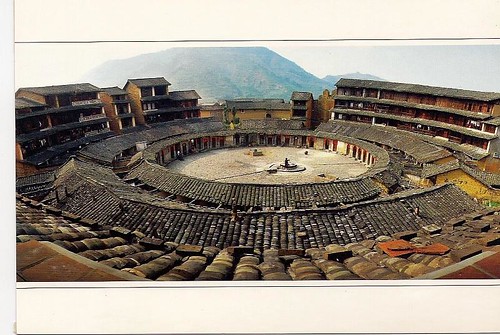Fujian Tulou, China
Fujian Tulou is "the most extraordinary type of Chinese rural dwelinngs" of the Hakka and others in the mountainous areas in southwestern Fujian, China. They are mostly built between the 12th to the 20th centuries.
A tulou is usually a large, enclosed and fortified earth building, rectangular or circular in configuration, with very thick load-bearing rammed earth walls between three and five stories high and housing up to 80 families. Smaller interior buildings are often enclosed by these huge peripheral walls which can contain halls, storehouses, wells and living areas, the whole structure resembling a small fortified city.
A total of 46 Fujian Tulou sites, including Chuxi tulou cluster, Tianluokeng tulou cluster, Hekeng tulou cluster, Gaobei tulou cluster, Dadi tulou cluster, Hongkeng tulou cluster, Yangxian lou, Huiyuan lou, Zhengfu lou and Hegui lou, have been inscribed in 2008 by UNESCO as World Heritage Site, as "exceptional examples of a building tradition and function exemplifying a particular type of communal living and defensive organization [in a] harmonious relationship with their environment".





















0 comments:
Post a Comment